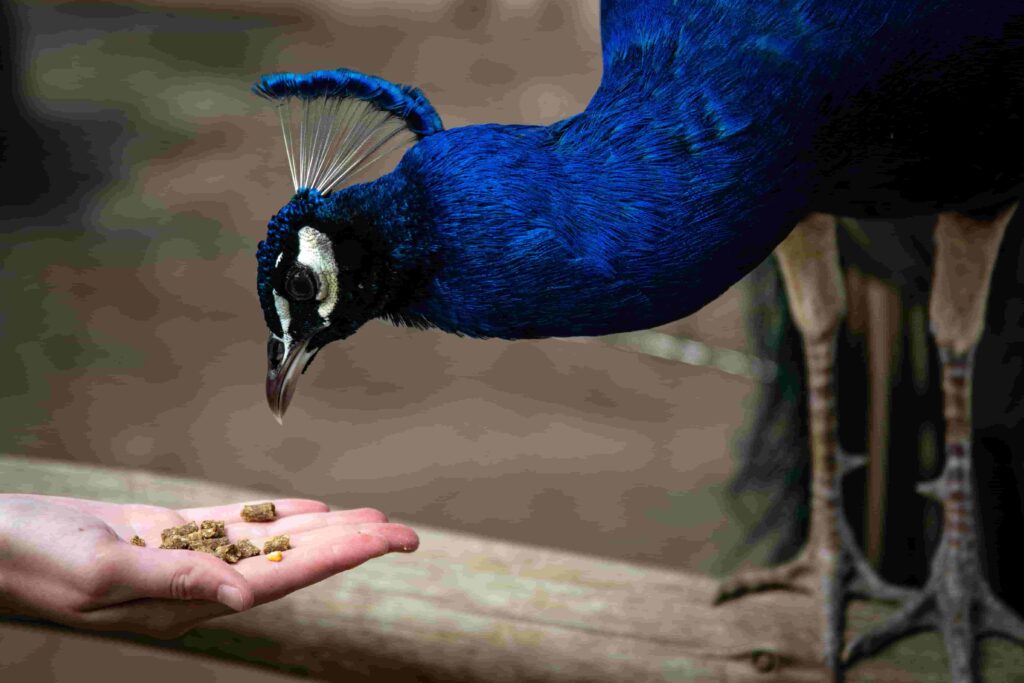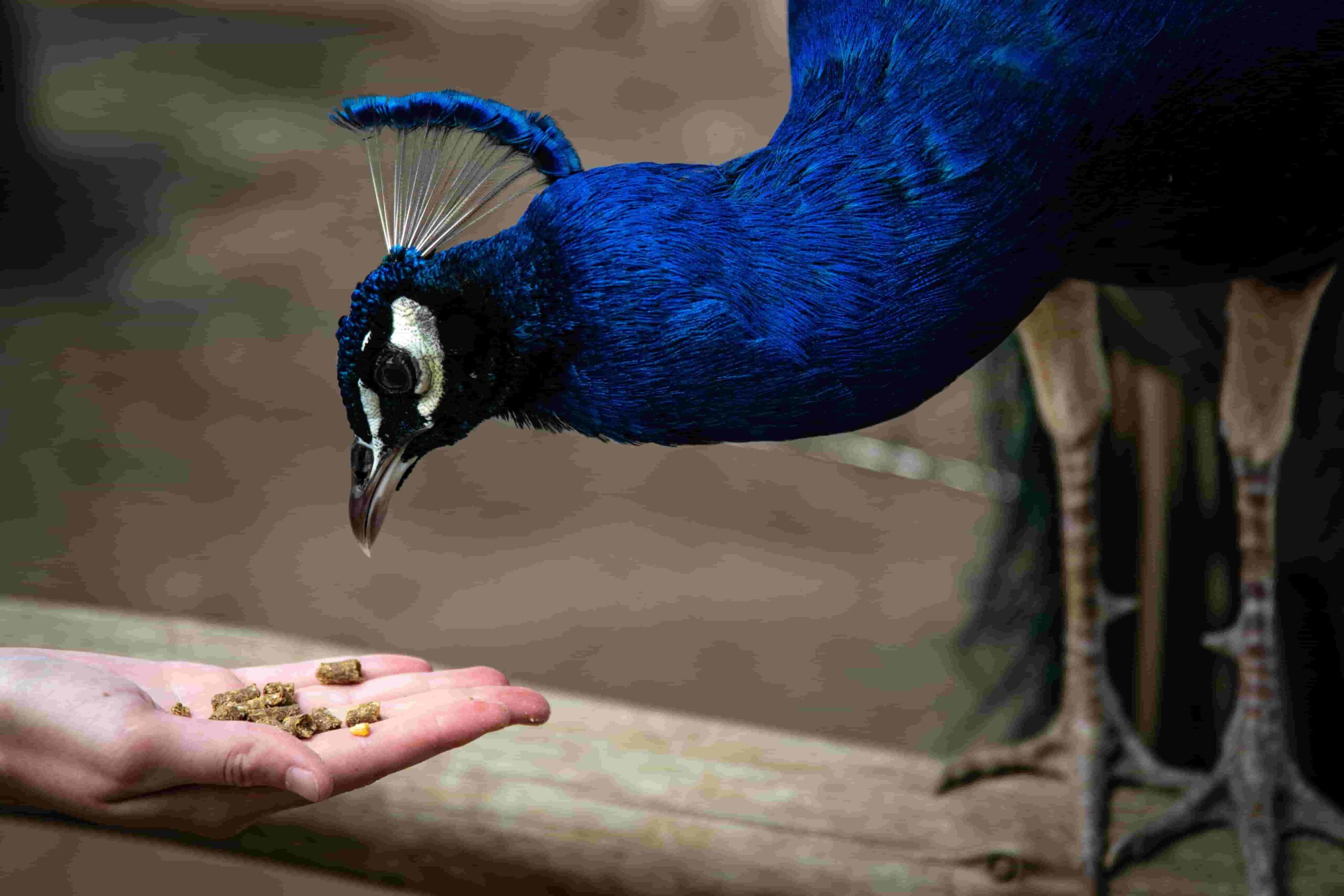The cost of peacocks can vary depending on factors such as their age, breed, and quality. On average, peacocks may cost anywhere from $150 to $500 or more. On average, it may cost between $10 and $20 per month to feed a peacock a basic diet of commercial bird food and occasional treats.

How much do peacocks cost?
The cost of peacocks can vary depending on factors such as their age, breed, and quality. On average, peacocks may cost anywhere from $150 to $500 or more. However, prices can vary greatly depending on the seller and the specific type of peacock being purchased. It’s important to do research and compare prices from different sources before purchasing a peacock. Additionally, potential buyers should also consider the cost of providing care and housing for a peacock, which can be significant. These birds require specialized diets and spacious enclosures, and they may require regular veterinary care.
How much does it cost to feed a peacock?
The cost of feeding a peacock can vary depending on a number of factors, such as the bird’s age, size, and activity level. On average, it may cost between $10 and $20 per month to feed a peacock a basic diet of commercial bird food and occasional treats. However, the cost of feeding a peacock can increase if they require a specialized diet or if they eat a large amount of food. It’s important to consult with a veterinarian or experienced peacock owner to determine the appropriate diet and feeding schedule for your peacock.
What are the different types of peacocks?
There are three main species of peacocks, which are the Indian peacock, the green peacock, and the Congo peacock. Within these species, there are several subspecies and color variations.
The Indian peacock, also known as the blue peacock, is the most well-known and widely recognized species of peacock. This species is native to India and Sri Lanka, and it is the national bird of both countries. Indian peacocks have long, iridescent blue and green feathers, which they display in a prominent fan-shaped tail during courtship rituals.
The green peacock is a species of peacock native to Southeast Asia. This species is smaller and more brightly colored than the Indian peacock, with feathers that are primarily green and yellow. The green peacock’s tail is not as large or elaborate as the Indian peacock’s, but it is still used in courtship displays.
The Congo peacock is a species of peacock native to the Congo Basin in central Africa. This species is the smallest of the three main peacock species, and it has shorter, less spectacular tail feathers. Congo peacocks are mainly blue and green in color, but they also have some black and white markings on their wings and tail.
Is it legal to own a peacock?
In most places, it is legal to own a peacock as a pet. However, the specific laws and regulations surrounding peacock ownership can vary depending on where you live. It’s important to check with your local authorities to determine if peacocks are permitted in your area and if any special licenses or permits are required to own one. Additionally, some neighborhoods and homeowners associations may have their own rules regarding peacock ownership. It’s a good idea to check with your neighborhood association and any relevant homeowner’s associations before getting a peacock.
Why own a peacock?
People may choose to own peacocks for a variety of reasons. Some people enjoy the beauty and elegance of these birds, and they enjoy watching them display their colorful feathers. Peacocks are also fascinating to observe, and they can provide entertainment and enjoyment for their owners. Additionally, some people may choose to own peacocks as a form of pest control, as they will eat insects and other pests in the yard. Peacocks may also be kept as breeding stock, for use in educational programs, or for showing in competitions.
What kind of environment can peacocks live in?
Peacocks are adaptable birds that can live in a variety of environments. In their native habitat, they can be found in forests, grasslands, and agricultural areas. They are also able to thrive in urban environments, where they can be found in parks, gardens, and other green spaces. Peacocks require a source of water and a place to perch and roost, and they need space to move around and forage for food. They can tolerate a range of temperatures and are not sensitive to changes in weather. However, they may need additional shelter or heating in colder climates.
Do peacocks lay eggs?
Yes, peacocks lay eggs. Female peacocks, known as peahens, will lay a clutch of eggs in a nest that they have built on the ground. The number of eggs in a clutch can vary, but peahens will typically lay between 4 and 6 eggs. The eggs are incubated by the female for about 28 days, after which the chicks will hatch. Peacocks are capable of breeding at 2 years of age, and they can lay eggs for several years. However, the fertility of their eggs may decline with age.
Can you eat peacock eggs?
It is possible to eat peacock eggs, but they are not commonly consumed. Peacock eggs are similar in size and appearance to chicken eggs, but they are generally considered to be less tasty. They have a slightly blander flavor and a tougher texture than chicken eggs, and they are not as widely available. Because of these factors, peacock eggs are not commonly eaten. However, some people may choose to eat them as a novelty or for the unique experience.


